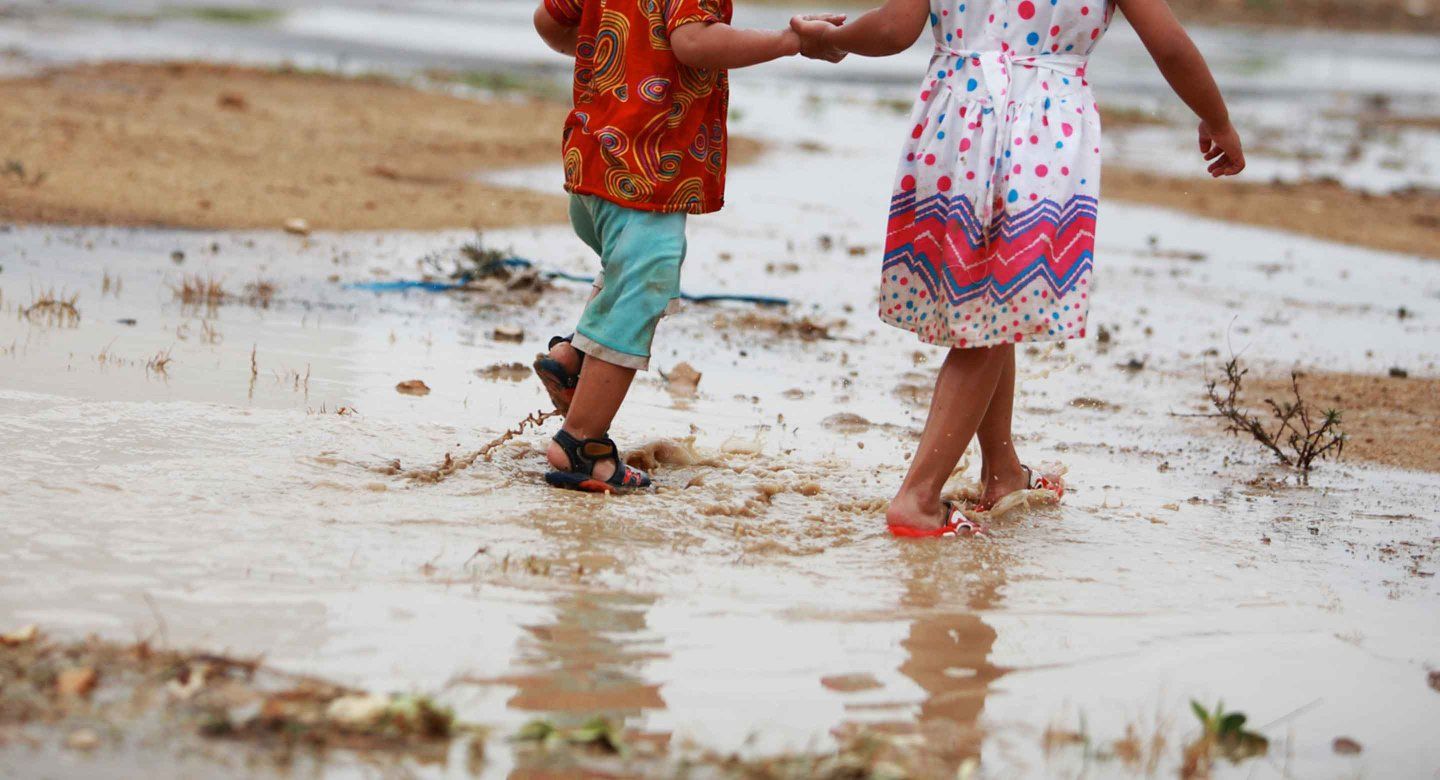How Infant Deaths and Flooding Shed Light on Climate Hazards
The findings of a 30-year study in Bangladesh provide a template for measuring long-term environmental health risks.
Scientists at UC San Diego’s Scripps Institution of Oceanography and UC San Francisco are beginning to uncover the long-term public health impacts of recurring environmental hazards such as flooding, wildfires or extreme heat.
In a paper published Tuesday, Dec. 5, 2023, in the Proceedings of the National Academy of Sciences, researchers examined infant deaths that occurred over a 30-year period in flood-prone areas of Bangladesh. They found that children who were born during rainy months faced a higher risk of dying than those born in dry months, and altogether more than 150,000 infant deaths could be attributed to the flooding.
“Child mortality is a proxy for easily avoidable negative health outcomes,” said Tarik Benmarhnia, PhD, an associate professor at Scripps Oceanography who studies climate change and health. “If we can’t avoid child mortality, there are also likely to be issues with malnutrition, mental health and communicable – from a public health perspective infant mortality is only the tip of the iceberg.”
Co-author Benjamin Arnold, PhD, MPH, an associate professor at UCSF, said the research shows the true extent of extreme weather events like flooding.
“This study’s results provide new motivation to keep an eye on significant, longer-term health impacts of extreme weather events, such as infant mortality, in addition to the more obvious impacts that we see in the days and weeks that follow,” Arnold said.
Bangladesh sits in the Ganges-Brahmaputra-Meghna river basin, which also runs through Tibet, Nepal, Bhutan and northern India and is home to more than 618 million people. Every year, monsoon season brings extensive flooding to Bangladesh, and those floods are predicted to become more frequent and extreme due to climate change.
This study’s results provide new motivation to keep an eye on significant, longer-term health impacts of extreme weather events ...”
To look at the long-term health implications of repeated exposure to flooding, the study combined a well-established spatially-resolved flood-zone mapping tool and health data from 58,945 mothers and 150,081 births collected by U.S. AID’s Demographic and Health Surveys (DHS) program between 1988 and 2017.
The researchers matched mothers that were nearly identical across other measurable characteristics that might impact infant mortality, such as wealth and education. They did that to isolate as much as possible the effect of living in flood-prone areas from other factors that could alter the risk of child mortality.
The study estimated that living in flood prone areas was associated with an excess risk in infant mortality of 5.3 additional deaths per 1,000 births compared to living in non-flood prone areas over the 30-year period between 1988 and 2017, with children born during rainy months at higher risk of death than those born in dry months.
The researchers then used national population data, weighted statistical analysis, and the same flood-zone mapping tools to extrapolate their findings with this initial group to the entire country of Bangladesh. This national-scale analysis estimated that 152,753 excess infant deaths were attributable to living in flood-prone areas in Bangladesh over the past 30 years.
The study’s results don’t point to any particular mechanism for how flood exposure might drive increased infant mortality, but Benmarhnia suggested flooding can impact food security and financial stability, especially for agricultural communities.
The study provides a template for measuring longer-term health impacts from floods and a generalizable example of how to study the long-term health effects of climate-related environmental hazards.
“We didn’t quantify the role of climate change, but it’s the elephant in the room,” Benmarhnia said. “While our data can’t explicitly link our findings to climate change, they’re compatible with the notion that climate change is making flooding and the public health impacts that flow from it worse.”
The authors are now studying the potential of seasonally timed nutritional interventions that can bolster food security when communities are at the greatest risk from flooding and other climate-sensitive exposures.
Authors: In addition to Benmarhnia and Arnold, the study was led by Francois Rerolle, a postdoctoral researcher at UC San Francisco and Scripps Oceanography.
Funding and Disclosures: This work was supported in part by the National Institute of Allergy and Infectious Diseases (R01-AI166671 to B.F.A.).
